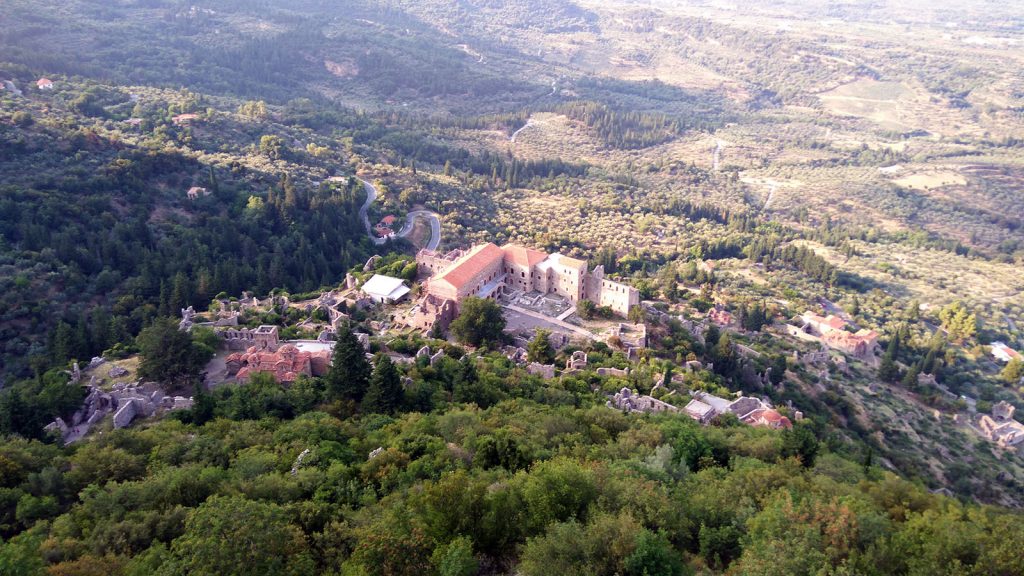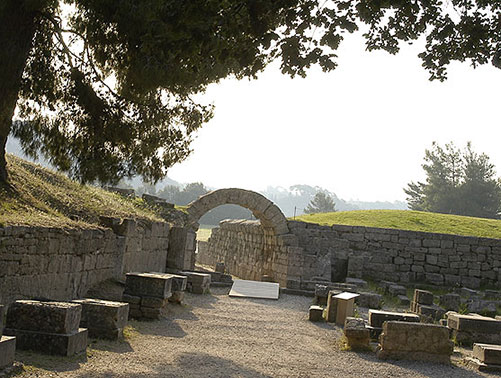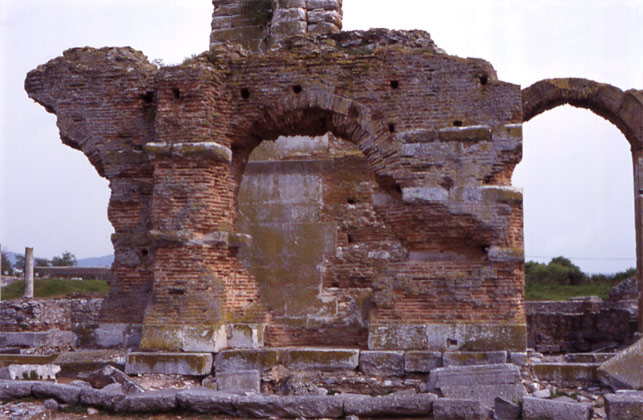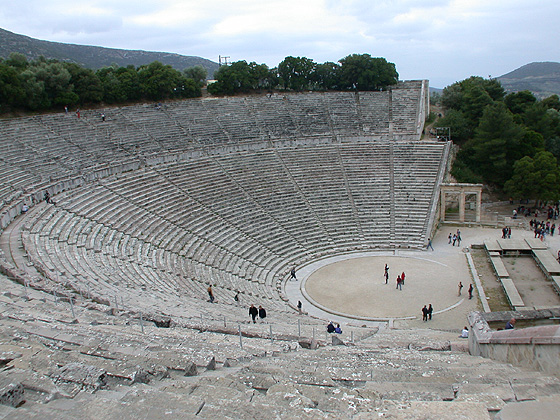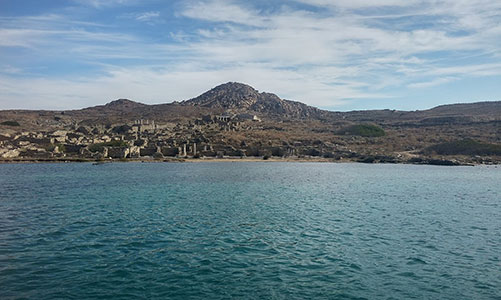Delos is perhaps the only island in the Mediterranean which, despite its very small size (3.4 km2), was very important in antiquity. It was a leading religious center and, after the end of the Persian Wars, it functioned as the seat of the treasury of the so-called Delian or Athenian league, while during the Hellenistic period – its heyday – it was the most important commercial center of the eastern Mediterranean; during this period it had over 30,000 permanent residents, a population that was too large for the small area of the island.
Undoubtedly, the reason for its prosperity must be sought, first of all, in its status as the birthplace of Apollo, which was assigned to the island from a very early period; Apollo was one of the most important ancient Greek gods and was especially associated with the Ionians. According to the Homeric Hymn of the 7th or 6th century BC, after the end of the war of the Titans that resulted in the supremacy of Zeus over Cronus, Zeus decided to limit the forces of Cronus’ darkness that still prevailed in the world and introduce the birth of light. So he met Leto, who, although persecuted by Hera, wandered in the Aegean trying to find a place to accept her to give birth. Only Delos accepted her and thus the island became the place where the bright god Apollo appeared (δῆλος = apparent).
It is interesting to note that the description of the places where, according to the Hymn, Leto wandered, are in fact a mapping of the areas where the Ionians gradually spread during the early Greek colonization (11th – 8th century BC). It seems that after the completion of the movement of the Ionians from eastern mainland Greece, to the Cyclades, to the islands of the eastern Aegean and to western Asia Minor (Ionia), Delos, located halfway between their passage, became a pan-Ionian religious center, at the latest during the 8th century BC.
During the early Archaic period, the votive offerings on Delos indicate that there was a strong presence of Naxians and Parians in the sanctuary, but towards the end of the 6th century BC, primacy went to the tyrants of two great powers: Peisistratos of Athens and Polycrates of Samos. Between 540-528 BC, the Athenians carried out a purification, or cleansing of the island, removing the burials that were visible from the sanctuary, and probably built a temple to Apollo (the so-called poros temple). In 525 BC, Polycrates gave to Delos the adjacent islet of Rhenia, thus providing the sanctuary with the basis for its later wealth. After the end of the Persian wars, Athenian hegemony became more intense on the sanctuary. In 478 BC, the Delian League was founded with its seat in the sanctuary. The common fund of the League was kept in it, until about twenty years later, when Pericles transferred it to Athens. In 426 BC, the Athenians, as a result of the devastation they suffered during the Peloponnesian War, carried out a second purification on the island. They removed all burials from Delos and prohibited all births and deaths on the island; henceforth, both had to take place in neighboring Rhenia. In case of an unexpected death on the island, a purification ceremony had to follow. Finally, in 422, under the pretext of purification, the Athenians exiled (temporarily) the entire population of the island, who found refuge in Adramytion in Asia Minor.
The hegemony of Athens in Delos ended in 314 BC, when the Macedonian king Antigonus declared Delos autonomous and founded the League of the Islanders. Although the population of the island remained relatively small, Delos, in addition to being a religious center, gradually became a commercial center.
Independence lasted until 167 BC. The new great power of the day, Rome, handed over control of Delos to Athens. The inhabitants of the island were exiled and replaced by Athenian clerurchs. But from that year and for about a century, Delos experienced unprecedented prosperity. Desiring to rival the economic power of Rhodes, the Romans turned Delos into a tax-free port. This caused an economic and population explosion on the island. In addition to Italians, Delos attracted merchants and businessmen from all over the eastern Mediterranean, making it a multicultural and cosmopolitan urban center. In the 2nd century BC, Delos was one of the most important commercial centers of the eastern Mediterranean and hosted perhaps the largest slave market at that time.
Its prosperity lasted until 88 BC, when, in the context of the war of Rome with the king Mithridates of Pontus, the latter attacked the island and looted it. In 69 BC, the island suffered additional damage from a pirate raid. Delos never really recovered from these attacks, since the trade routes from the 1st century BC had shifted. In the imperial period, Delos was a small urban center compared to its previous phase, which survived until the end of antiquity. Since then the site was abandoned and became a source of building materials. Delos came out of obscurity again with the excavations started at the end of the 19th century by the French Archaeological School of Athens, which continue to this day.
Today the visitor of the island can observe the buildings and the facilities that have come to light from the excavations. The city and the sanctuary were located in the northern (and mainly northeastern) part of the island, where the ground is flatter. Also, on the west coast, the ground was more leeward (with Rhenia opposite it), a place where the sacred and commercial port was built. During the Classical and Imperial periods the settlement was limited in area and was concentrated around the so-called theater district. During its heyday of the 2nd century BC the city grew rapidly, covering an area of about 80 hectares. This is the phase of the city that is most visible today. In addition to the countless houses with mosaics, the archeological site contains a large number of monuments, the most important of which are the complex of the sanctuary of Apollo, the market of the Italians, the street of the lions, the palaestra, the Jewish synagogue, the Serapeion, the sanctuary of the Syrian gods, the Heraion, the theater, and others.
The main problem that the monuments face today (and the inhabitants of Delos faced in antiquity) are the strong north winds and the sea, which erode not only the buildings but also the shores of the island (the archeological site is located in a low altitude from the surface of the sea). An additional problem is the fact that, according to research, the sea level on the west coast has increased significantly compared to the Hellenistic period. Another factor of deterioration is the dry rivers that flow from the adjacent hills, which during the winter flood and direct rainwater to the archeological site. This seems to have been a problem for the inhabitants of the island in antiquity as well. The dry rivers had even formed coastal swamps which dried up in the 2nd century AD. Finally, in order to avoid soil erosion from the violent rainfalls that generally characterize the Greek landscape, the ancient inhabitants of the island had settled their fields with the aid of water collection tanks, which they used for rural irrigation or supplying water to the city.
In order to deal with these problems and for the maintenance and restoration of the monuments, in 1994 the “Working Group for the Antiquities of Delos” was established, which in 2001 was renamed the “Committee for the Preservation of the Monuments of Delos”.
Sources
Zapheiropoulou, Δήλος. Τα μνημεία και το μουσείο, Αθήνα 1983,
“Apollo” and “Delos” in S. Hornblower and A. Spawforth (Eds.), The Oxford Classical Dictionary, Oxford 1996, 122-123, 442-444,
F. Ζapheiropoulou, Δήλος. Μαρτυρίες από τα μουσειακά εκθέματα, Αthens 1998,
P. Bruneau και J. Ducat, Οδηγός της Δήλου, Athens 2005.



